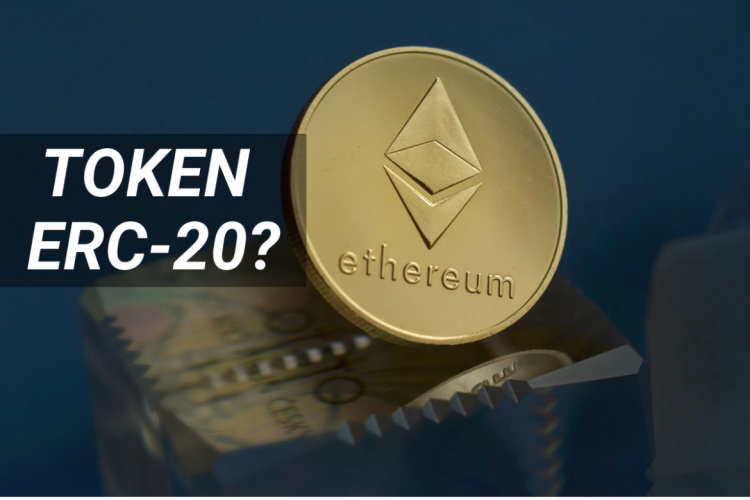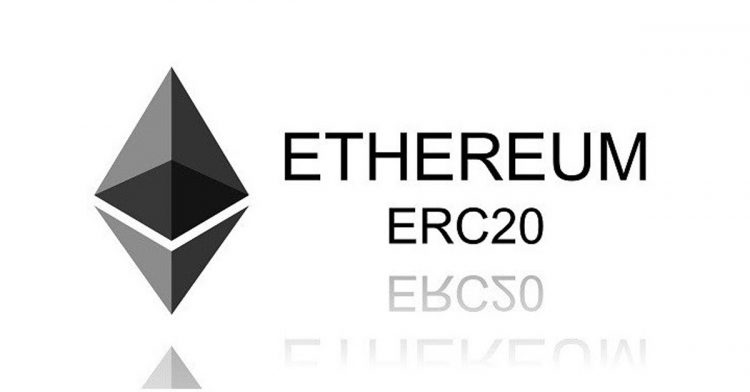Advertisement
What is the ERC-20?
ERC-20 stands for “Ethereum Request for Comment.” Created by Fabian Vogelsteller in 2015, the ERC-20 token is the technical standard used for all smart contracts on the Ethereum blockchain to deploy tokens.
Ethereum has the second largest Market Cap compared to Bitcoin but it is used in a different way – based on the use of tokens that can be traded or traded.
In the Ethereum network, tokens represent a variety of digital asset classes, such as vouchers, IOU (debt) or even tangible objects in the real world. The token is basically a Smart contract that works on the Ethereum blockchain.
The ERC-20 standard outlines six different functions for the benefit of other tokens in the Ethereum network. These functions include how to transfer tokens and how users access data for a particular token. This ultimately ensures that all tokens operate in any location in the Ethereum network.

6 mandatory rules:
- totalSupply: The total number of tokens issued.
- balanceOf: Check the token balance in each Ethereum wallet
- transfer: This function will manage the transfer of tokens to the user’s wallet address.
- transferFrom: Allows token holders to exchange with each other.
- approve: Check each transaction and compare it to the Total Supply to make sure there is no shortage or excess of tokens.
- allowance: Check the token balance to see if the wallet address has enough tokens to transfer.
The ERC-20 is part of a set of several other Ethereum standards, such as ERC-71, which focuses on irreplaceable tokens (NFT) and ERC-884, which allow companies to use blockchain to maintain registration.
How does the ERC-20 work?

ERC-20 tokens are blockchain-based assets that are valuable and operate by sending and receiving on the Blockchain.
For example, the difference between ERC-20 tokens and Bitcoin is that instead of running on their own blockchain, ERC-20 tokens are issued on the Ethereum network.
Another difference between ERC-20 tokens and Bitcoin is the need for tokens to write a piece of code to be stored on the Ethereum blockchain.
The Ethereum blockchain is then responsible for processing transactions and monitoring the balances of token holders – a process that is not mandatory for other digital currencies.
ERC-20 tokens are sent using Ethereum Gas. Gas refers to the fee or valuation value, which is required to successfully execute a transaction or execute a contract on the Ethereum blockchain platform.
Ether (ETH) is used to promote transactions on the Ethereum network. Ether helps finance mining costs, and without it, it would not be possible to send tokens over the network.
ETH itself is not an ERC-20 token; instead, there is an ETH version called “Wrapped Ethereum”, (WETH) which is the ERC-20-compliant ETH version. This means that some decentralized apps (DApps) favor WETH instead of ETH for technical reasons such as trading.
The ERC-20 token provides overarching standards by providing rules that all Ethereum tokens must adhere to. Ethereum operates on a decentralized financial network and although it is not required to use the ERC-20 standard, it will certainly be beneficial to use as a set of guides when operating in the Ethereum network.
Some of the aforementioned rules revolve around how tokens can be transferred, how transactions are approved, how users can access data about tokens, and the total token supply.
If you are planning to buy any digital currency issued as ERC-20 tokens such as Tether, BAND, AAVE, you must also have a wallet that is compatible with these tokens.
There are many different options for wallets including Metamask, MyEtherWallet and others.
See also: What is fan token? Temporary trend or real potential?
Why do we need ERC-20 tokens?
In short, they make things simpler.
ERC-20 makes it extremely easy to create new tokens, and that’s why Ethereum became the most popular platform for ICOs in 2017.
ICOs or coin offerings are originally a type of crowdfunding, except for supporters who receive newly created tokens. It’s a way for companies in the cryptocurrency economy to raise capital and fund development.
The trading price for an ETH in early January 2017 was around $8. Two months later, that number quadrupled and the rest went down in history. The price of an ETH was reached all the time at around $1440 on January 13, 2018, an increase of 18,000% over the previous year.
This is because, ICOs have made millions of dollars from the “promises” in their white paper, with many people having no real active products.
In 2021, Ethereum is the network behind the decentralized financial industry (DeFi) because of its power as the foundation for smart contracts.
Before the ERC-20 token, developers would use another term in the code – for example, one token used [totalAmount] while the other used [totalNumber].
Exchanges and wallets are needed to build their platforms in response to each token’s code.
With the general standard, new tokens can be put on the exchange or automatically transferred to the wallet after they are created.
The ERC-20 tokens have played a major role in making many cryptocurrencies and tokens accessible for common use, due to their simplicity and potential compatibility with other Ethereum token standards.
See also: What is Wrapped Tokens?
What does ERC-20 tokens have to do with the decentralized finance (DeFi) industry?
For the most part, the DeFi industry is based on the Ethereum blockchain.
ERC-20 is important for DeFi, as it is an official protocol for proposing improvements to the Ethereum network.
Ethereum can support DApps. These DApps are built on the existing Ethereum blockchain, based on its underlying technology.
In turn, Ethereum charges developers for computing power in their networks, which can only be paid for in its currency.
Depending on its purpose, DApp can create ERC-20 tokens to act as a currency, shares in the company, take points in the loyalty program, or even proof of ownership.
DeFi empowers DApps to be built on decentralized technology, rather than being built and controlled by a single centralized organization or company, and DApps empowers DeFi because they are the means of carrying out its mission in practice.
















